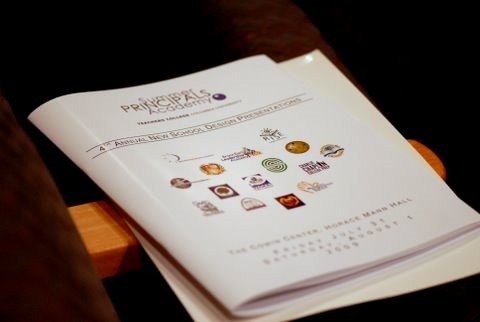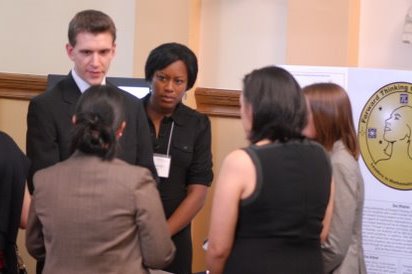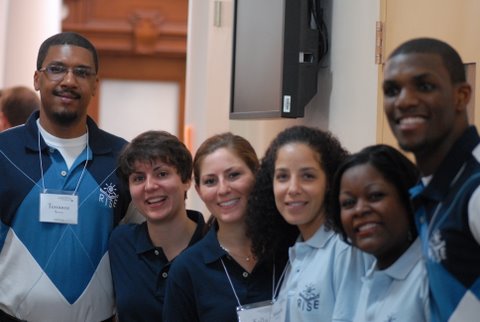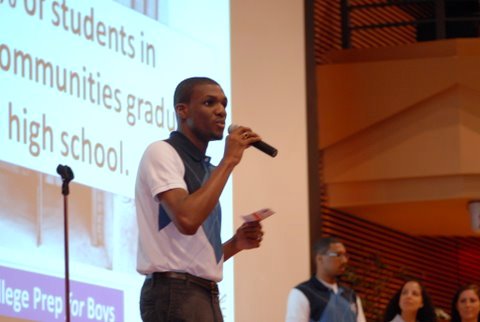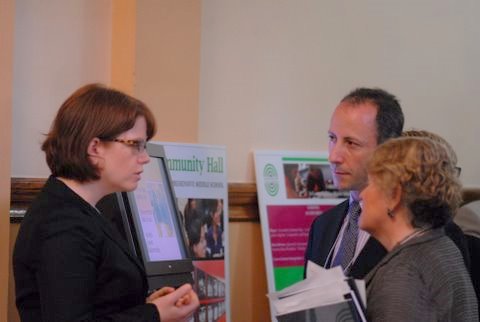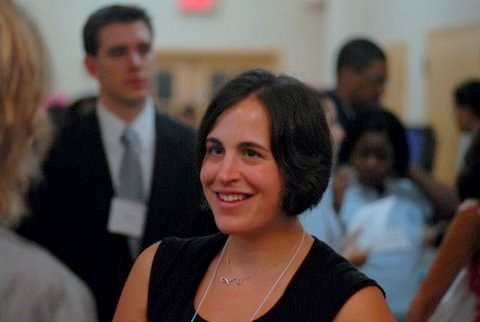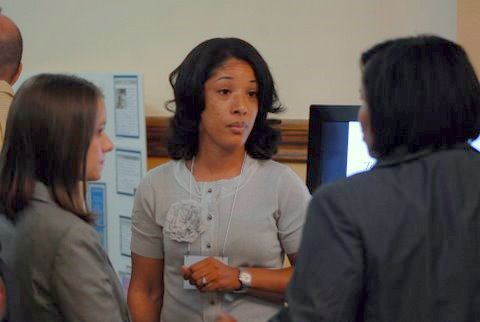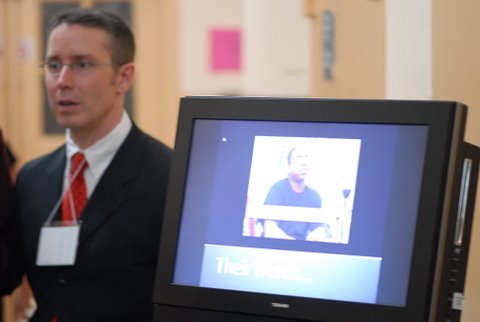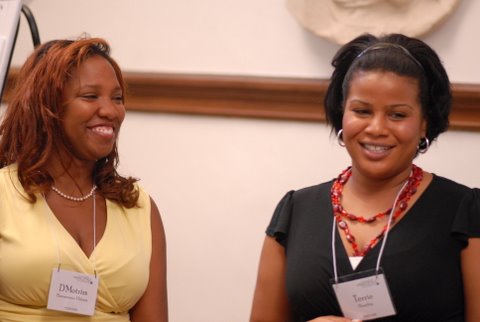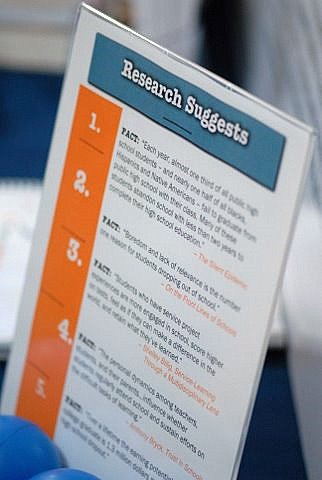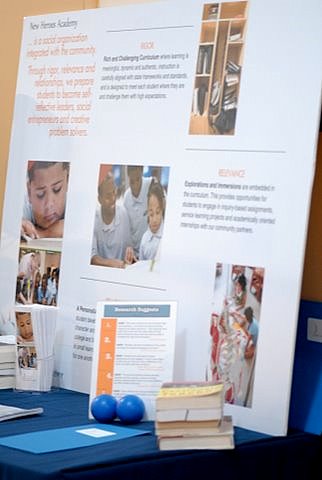Creating NYC Schools in Class
The imaginary campuses were the result of endless hours of work by participants in the Summer Principals Academy (SPA) at Teachers College, who took on as their capstone projects the task of creating the schools while hewing closely to the application guidelines of the New York City Department of Education for proposals for new schools.
On July 31 and August 1 in the Cowin Center Auditorium, 84 educators presented proposals for 10 middle and high schools and five elementary schools to a panel of 10 education professionals. “All of the presentations represented a tremendous amount of hard work and ingenuity,” panel member Christina Grant, Deputy Director of New York City’s Charter School Office, wrote in an e-mail. “All were interesting, and some could be viewed as viable school models or options.”
TC’s Summer Principals Academy is a 14-month, 36-credit program for working teachers and school administrators that culminates in a master’s degree and School Building Leader Certification in New York State. Students work in teams of five or six to develop the New School Design Presentations at the end of the second summer session.
This year, more than 150 students participated in the program over two consecutive, six-week summer sessions and a 450-hour administrative internship during the intervening school year. All students are employed in various schools across the country while participating, and their internships are served at the schools where they work. Graduates can become certified principals in state of New York after successfully passing the certification exam.
A requirement of the designs was to create a school for underperforming students, so a number of the schools were set in some of the city’s most troubled neighborhoods. RISE College Prep, for example, was designed for boys in grades six through eight in a predominantly African-American and Hispanic neighborhood in the Bronx, although it would be open to all areas of the city and all ethnicities “who wish to break down barriers, succeed in high school and go on to college.” The school would take advantage of its proximity to Fordham University as well as other cultural and educational facilities in the Bronx, such as the Bronx Zoo and the New York Botanical Gardens, according to the team, which included Terrance Brown, Michael Cormack, Kelly Dolan, Milagros Garcia, Kim Hutchinson and Nicole Mortorano.
The team led with the social and educational problems they were trying to address, noting that that black and Latino males are “likely” to graduate from high school with only eighth-grade reading skills, were nearly three-and-a-half times likelier to be expelled, and two to seven times more likely to be incarcerated, than their white peers. To help students face these challenges, RISE would focus on academic rigor to prepare them for college, offer lessons in integrity and ethics, integrate community service in all classes, and provide mentorship and support in setting goals.
“I think what made our proposal really resonant was the fact that we build the case that boys are being underserved by our current educational system,” Cormack wrote in an e-mail message. “We passionately believe that creating an environment where boys receive a rigorous academic curriculum and are educated by teachers committed to teaching within a single gender context will help to ensure that boys can achieve and thrive.”
The creators of New Heroes Academy, Alan Cheng, Porsche Cox, Joy Freeman, Joel Heckethorn, Jamie Rice and Ian Schwartz, billed it as a “social organization integrated with the community” surrounding the Bayard Rustin Education Campus in the Chelsea section of Manhattan. Because “the world doesn’t look like a classroom,” the Heroes Academy model breaks up classroom work with weekly “hero experiences,” or educational off-campus projects, and three-week “hero core sessions” each semester, in which students work with volunteers from the community on service projects.
The VOCES Academy of Language Learners was targeted to a high-need, English language-learner population. According to the proposal written by Brenda Garcia, Vanessa Handal, Ross Macdonald, Rebecca Odessey, Hannah Park and Na’imah Salahuddin, the kindergarten-through-fifth grade school emphasizes bilingual education, especially for native Spanish speakers, but it was “created to service all students in order to help them master at least two languages.” Grant called the VOCES proposal “compelling” because of its focus on greatly needed bilingual education.
“Teams that used the available data from the NYC DOE to inform their educational model were particularly strong,” Grant wrote. But, she added, “We would accept any proposal submitted by a group interested in opening a district or charter school for consideration and review.”
Published Wednesday, Aug. 12, 2009
